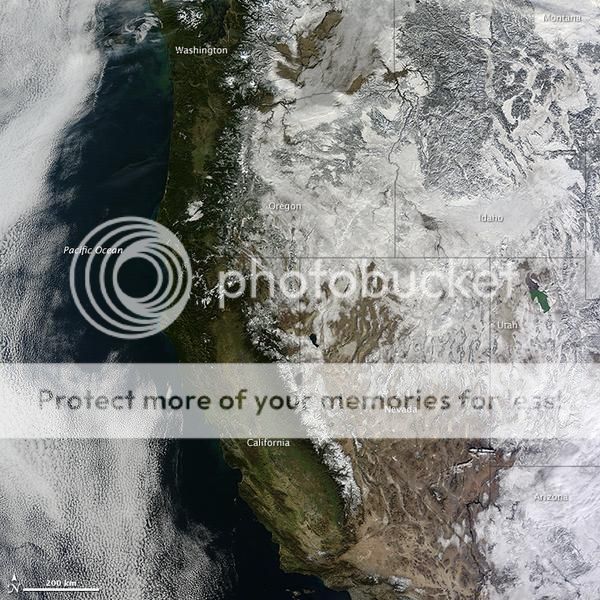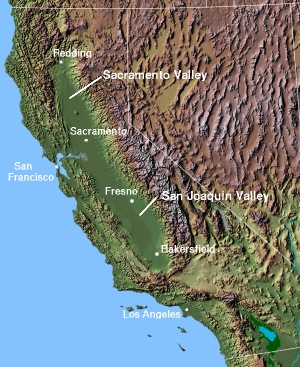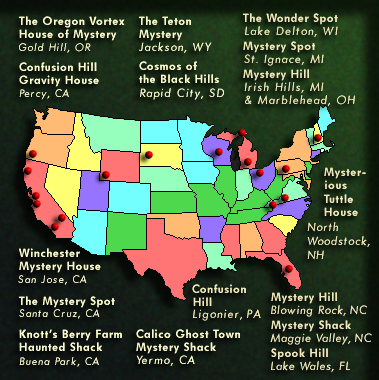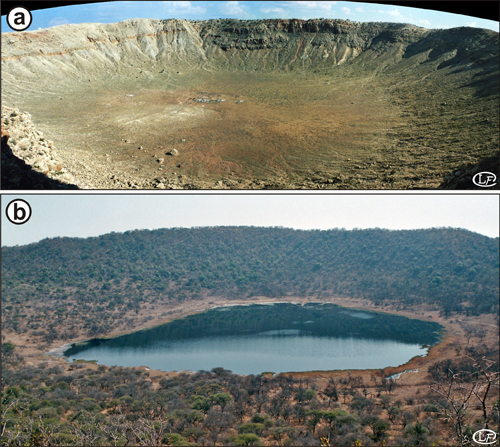It looks like you're using an Ad Blocker.
Please white-list or disable AboveTopSecret.com in your ad-blocking tool.
Thank you.
Some features of ATS will be disabled while you continue to use an ad-blocker.
1
share:

So im no expert just curious... looked around some sites didnt really get anywhere. I defiantly believe in ancient civilizations and cataclysms and for sure, firm believe in ancient technology and breakaway civilizations. The recent thread where a member brought to our attention the ancient cities hand dug underground as an example, could there be more deeper and more technologically advanced like the stories about Mt Shasta?
Could they be chevrons similar to that of the chevrons in Madagascar?

Well, what do you think?
edit on 1/3/2015 by onequestion because: (no reason given)
edit on 1/3/2015 by onequestion because:
(no reason given)
Im really interested in this theory but i would have liked to see why you think California is an impact crater rather than just an image. Please try
to add images that describe your theory.
a reply to: Scotscorps84
Look at the way the land is shaped going down the coast getting deeper as it moves south. Looks a lot like an impact crater.
It looks like something slide across the surface.
Look at the way the land is shaped going down the coast getting deeper as it moves south. Looks a lot like an impact crater.
It looks like something slide across the surface.
If you are implying the Sacramento and San Joaquin valleys, it looks to me like an ancient inland sea that dried up. Its inlet from the Pacific
ocean, is in the San Francisco area. Elevation changes along the coast from plate tectonics has cut the valleys off from the Pacific ocean causing it
to dry up.
edit on 3-1-2015 by eManym because: (no reason given)
The valley and mountains are created from one tectonic plate rucking up and crumpling (creating the mountains), while the other tectonic plate is
pushed deep underground into the mantle (creating the valley). An impact crater would create a circular shape.
a reply to: onequestion
An impact crater would be round (ish) like the gulf of Mexico or the craters you see on the moon.
California's vast central valley is the result of plate techonics, specifically the pacific plate moving beneath the north american plate causing the Sierra's to rise.
An impact crater would be round (ish) like the gulf of Mexico or the craters you see on the moon.
California's vast central valley is the result of plate techonics, specifically the pacific plate moving beneath the north american plate causing the Sierra's to rise.
Speaking of California and craters, many would think Los Angeles would certantly be better off if it was just a crater nowadays.
originally posted by: onequestion
a reply to: eManym
It starts all the way up in oregon possibly washington state.
Actually it doesn't really, this is more accurate.

Still they say they think so it is not a sure thing as to how the valley was formed. Then there is the fault line running the whole length. When we don't know why rule any things out I suppose. Interestingly there is the mystery anomaly
The flatness of the valley floor contrasts with the rugged hills or gentle mountains that are typical of most of California's terrain. The valley is thought to have originated below sea level as an offshore area depressed by subduction of the Farallon Plate into a trench further offshore.
The valley was later enclosed by the uplift of the Coast Ranges, with its original outlet into Monterey Bay. Faulting moved the Coast Ranges, and a new outlet developed near what is now San Francisco Bay. Over the millennia, the valley was filled by the sediments of these same ranges, as well as the rising Sierra Nevada to the east; that filling eventually created an extraordinary flatness just barely above sea level;
en.wikipedia.org...
Interesting distribution of magnetic anomalies ending in Oregon.
The effects they show for money may be fake but i think the places are not, the oregon one made me dizzy and sick to my stomach. Could there be deeply buried parts of a large object scattered here?
www.oregonlive.com...

originally posted by: onequestion
a reply to: Char-Lee
Could there be deeply buried parts of a large object scattered here?
I dont know but i see what your saying. Definitely odd anomaly. I wouldn't doubt there was some ancient leftovers from civilizations way way way back.
What I am saying is if there were and object big enough to gough the sacramento valley there would have to be buried pieces of it somewhere and there are strance areas across the valley and at the end So end of oregon..so just to speculate :-)
Like this crater the second down only much larger!

Take a look at this...
Colossal Asteroid Impact 3.3 Billion Years Ago --"Dwarfed the Dinosaur-Extinction Event"
now a new study reveals the power and scale of a cataclysmic event some 3.26 billion years ago which is thought to have created geological features found in a South African region known as the Barberton greenstone belt. The Barberton greenstone belt is an area 100 kilometers (62 miles) long and 60 kilometers (37 miles) wide
They mention other very large ones also
www.dailygalaxy.com...
originally posted by: FyreByrd
a reply to: onequestion
An impact crater would be round (ish) like the gulf of Mexico or the craters you see on the moon.
Not necessarily, depends on the angle of impact, if it is low enough, you wouldn't get the circular crater....although this is rare.
Don't forget weathering too, chances are most of the significant impacts in Earths history have long since washed away (not in the literal sense). It stands to reason a lot of the circular impact zones would no longer appear to be circular, or even visible at all.
a reply to: FyreByrd
A quick Google came up with this...plenty of images of non-circular craters all over the place too....
Source
Whilst yes, most are circular, not all necessarily are.
A quick Google came up with this...plenty of images of non-circular craters all over the place too....
But elsewhere in our solar system, on planets such as Mercury and bodies such as our moon, craters are very evident.
And they're not always circular, says astronomer Fred Watson.
"Occasionally you see craters that are elongated and sometimes you see canyons that have been excavated by incoming meteorites.
"You even see lines of multi-ringed craters as if something has bounced over the surface, says Watson.
The South Pole-Aitken basin on the Moon is a good example of an elliptical crater. And some scientists argue that a rock the size of Pluto whacked into Mars causing a huge elliptical crater on the planet's north face.
Source
Whilst yes, most are circular, not all necessarily are.
edit on 6/1/15 by woogleuk because: (no reason given)
new topics
-
Joe Biden and Donald Trump are both traitors
US Political Madness: 44 minutes ago -
I'm new here. Avid conspiracy fan.
Introductions: 56 minutes ago -
Denmark's Notre-Dame moment - 17th Century Borsen goes up in Flames
Mainstream News: 2 hours ago -
We need less laws in the UK not more
General Chit Chat: 4 hours ago -
The Baloney aka BS Detection Kit
Social Issues and Civil Unrest: 9 hours ago -
Suspected Iranian agent working for Pentagon while U.S. coordinated defense of Israel
US Political Madness: 10 hours ago
top topics
-
Suspected Iranian agent working for Pentagon while U.S. coordinated defense of Israel
US Political Madness: 10 hours ago, 15 flags -
USO 10 miles west of caladesi island, Clearwater beach Florida
Aliens and UFOs: 17 hours ago, 9 flags -
The Baloney aka BS Detection Kit
Social Issues and Civil Unrest: 9 hours ago, 6 flags -
We need less laws in the UK not more
General Chit Chat: 4 hours ago, 4 flags -
Denmark's Notre-Dame moment - 17th Century Borsen goes up in Flames
Mainstream News: 2 hours ago, 4 flags -
How does my computer know
Education and Media: 13 hours ago, 3 flags -
I'm new here. Avid conspiracy fan.
Introductions: 56 minutes ago, 0 flags -
Joe Biden and Donald Trump are both traitors
US Political Madness: 44 minutes ago, 0 flags
active topics
-
Candidate TRUMP Now Has Crazy Judge JUAN MERCHAN After Him - The Stormy Daniels Hush-Money Case.
Political Conspiracies • 200 • : matafuchs -
It has begun... Iran begins attack on Israel, launches tons of drones towards the country
World War Three • 703 • : ImagoDei -
NYAG Letitia James Prepares to Begin Seizing TRUMP Assets Even Though There Was No Crime.
Above Politics • 283 • : matafuchs -
-@TH3WH17ERABB17- -Q- ---TIME TO SHOW THE WORLD--- -Part- --44--
Dissecting Disinformation • 484 • : Thoughtful3 -
Joe Biden and Donald Trump are both traitors
US Political Madness • 4 • : ColeYounger2 -
Mandela Effect - It Happened to Me!
The Gray Area • 101 • : ArMaP -
Daylight Saving Time, one of the demons tools.
ATS Skunk Works • 14 • : JonnyC555 -
Spy Music
Music • 42 • : Hellmutt -
What are the chances that we are in a 'base reality''??
Philosophy and Metaphysics • 49 • : ghandalf -
Tesla cutting 14,000 jobs
Global Meltdown • 52 • : Vermilion
1

